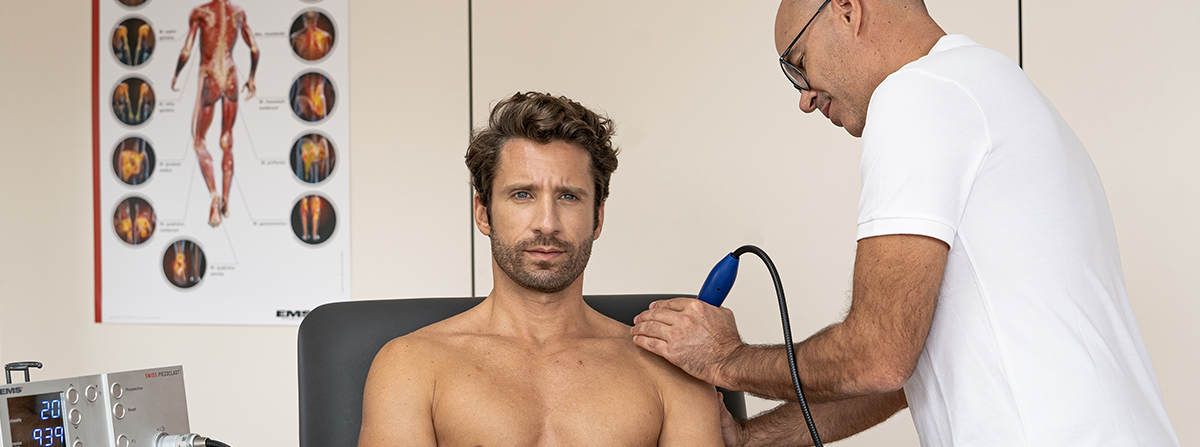El tratamiento con ondas de choque extracorpóreas (ESWT) utiliza pulsos acústicos para tratar determinados trastornos musculoesqueléticos. Es una modalidad de tratamiento bien estudiada y comúnmente utilizada para una variedad de condiciones musculoesqueléticas. La terapia con ondas de choque extracorpóreas focalizadas (ESWT) se utiliza con éxito para:
- Indicaciones profundas, como la tendinitis calcificante del hombro
- Patologías subagudas o crónicas
- Lesiones profundas calcificadas o desgarros miotendinosos, fracturas no unidas o entesopatías localizadas en el codo y recalcitrantes a la curación

